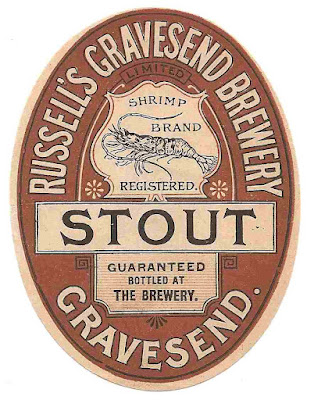The grist is very similar to that of Porter. Except there’s a little bit more sugar and a little less roasted malt. Most of the sugar is described as “black invert”. Which implies No. 4 invert to me. But if I plug that into my brewing software it comes out way too dark. While No. 3 leaves it looking about right.
No surprise with the hops, which are the same as in all the other beers from Russell: a third 1908, two thirds 1910, English hops.
Was this aged? I’ve no real idea. Possibly six months to a year. With Brettanomyces, obviously.
| 1911 Russell Double Stout | ||
| pale malt | 9.25 lb | 64.15% |
| brown malt | 0.75 lb | 5.20% |
| black malt | 0.50 lb | 3.47% |
| No. 3 invert | 3.75 lb | 26.01% |
| caramel 500 SRM | 0.17 lb | 1.18% |
| Fuggles 120 mins | 2.00 oz | |
| Fuggles 60 mins | 2.00 oz | |
| Fuggles 30 mins | 2.00 oz | |
| Goldings dry hops | 0.50 oz | |
| OG | 1074 | |
| FG | 1018 | |
| ABV | 7.41 | |
| Apparent attenuation | 75.68% | |
| IBU | 61 | |
| SRM | 34 | |
| Mash at | 149º F | |
| Sparge at | 175º F | |
| Boil time | 120 minutes | |
| pitching temp | 58º F | |
| Yeast | Wyeast 1768 English Special Bitter | |

I love Double stout often 6 percent abv a far more robust body than single stout but you can have more of it compared to treble and quadruple stout. O’ Hara’s Leann Folláin and Beoir Chorca Dhuibhne Pórtar are two favourites.
ReplyDeleteOscar